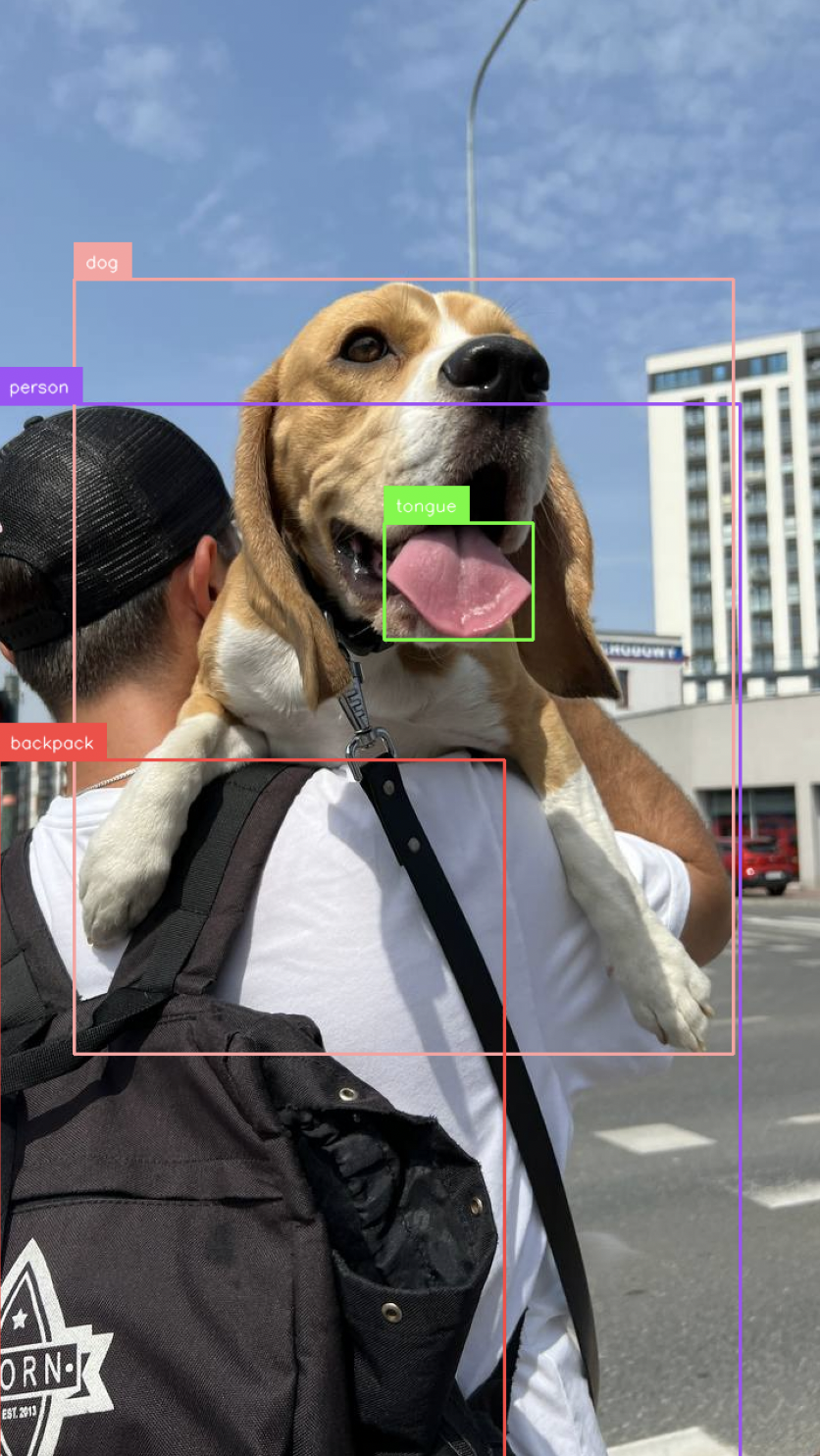YOLO-World (Object Detection)
YOLO-World is a zero-shot object detection model.
You can use YOLO-World to identify objects in images and videos using arbitrary text prompts.
To use YOLO-World effectively, we recommend experimenting with the model to understand which text prompts help achieve the desired results.
YOLO World is faster than many other zero-shot object detection models like YOLO-World. On powerful hardware like a V100 GPU, YOLO World can run in real-time.
Note
YOLO-World, like most state-of-the-art zero-shot detection models, is most effective at identifying common objects (i.e. cars, people, dogs, etc.). It is less effective at identifying uncommon objects (i.e. a specific type of car, a specific person, a specific dog, etc.).
Note
In inference package YOLO-World models are identified by yolo_world/<version>, where <version> can be one of
the following: s, m, l, x, v2-s, v2-m, v2-l, v2-x. Versions v2-... denote newer models, with
improved evaluation metrics.
How to Use YOLO-World¶
Run the following command to set your API key in your coding environment:
export ROBOFLOW_API_KEY=<your api key>
Then, create a new Python file called app.py and add the following code:
import cv2
import supervision as sv
from inference.models.yolo_world.yolo_world import YOLOWorld
image = cv2.imread("image.jpeg")
model = YOLOWorld(model_id="yolo_world/l")
classes = ["person", "backpack", "dog", "eye", "nose", "ear", "tongue"]
results = model.infer("image.jpeg", text=classes, confidence=0.03)[0]
detections = sv.Detections.from_inference(results)
bounding_box_annotator = sv.BoxAnnotator()
label_annotator = sv.LabelAnnotator()
labels = [classes[class_id] for class_id in detections.class_id]
annotated_image = bounding_box_annotator.annotate(
scene=image, detections=detections
)
annotated_image = label_annotator.annotate(
scene=annotated_image, detections=detections, labels=labels
)
sv.plot_image(annotated_image)
Run the following command to set your API key in your coding environment:
export ROBOFLOW_API_KEY=<your api key>
Then, you will need to set up an Inference server to use the YOLO World HTTP API.
To do this, run:
pip install inference inference-sdk
inference server start
Then, create a new Python file called app.py and add the following code:
import os
import cv2
import supervision as sv
from inference_sdk import InferenceHTTPClient
client = InferenceHTTPClient(
api_url="http://127.0.0.1:9001",
api_key=os.environ["ROBOFLOW_API_KEY"]
)
results = client.infer_from_yolo_world(
inference_input=["https://media.roboflow.com/dog.jpeg"],
class_names=["person", "backpack", "dog", "eye", "nose", "ear", "tongue"],
model_version="l",
confidence=0.1,
)[0]
detections = sv.Detections.from_inference(results)
bounding_box_annotator = sv.BoxAnnotator()
label_annotator = sv.LabelAnnotator()
labels = [classes[class_id] for class_id in detections.class_id]
annotated_image = bounding_box_annotator.annotate(
scene=image, detections=detections
)
annotated_image = label_annotator.annotate(
scene=annotated_image, detections=detections, labels=labels
)
sv.plot_image(annotated_image)
Info
**Breaking change!** There were versions: `0.9.14` and `0.9.15` where Yolo World was exposed
behind `InferencePipeline.init(...)` initializer that you needed to run with specific combination
of parameters to alter default behavior of pipeline such that it runs against YoloWorld model.
We decided to provide an explicit way of running this foundation model in `InferencePipeline` providing
a dedicated init function starting from version `0.9.16`
You can easily run predictions against YoloWorld model using InferencePipeline. There is a custom
init method to ease handling that use-case:
# import the InferencePipeline interface
from inference import InferencePipeline
# import a built-in sink called render_boxes (sinks are the logic that happens after inference)
from inference.core.interfaces.stream.sinks import render_boxes
pipeline = InferencePipeline.init_with_yolo_world(
video_reference="./your_video.mp4",
classes=["person", "dog", "car", "truck"],
model_size="s",
on_prediction=render_boxes,
)
# start the pipeline
pipeline.start()
# wait for the pipeline to finish
pipeline.join()
In this code, we load YOLO-World, run YOLO-World on an image, and annotate the image with the predictions from the model.
Above, replace:
["person", "backpack", "dog", "eye", "nose", "ear", "tongue"]with the objects you want to detect.image.jpegwith the path to the image in which you want to detect objects.
Then, run the Python script you have created:
python app.py
The result from YOLO-World will be displayed in a new window.

Benchmarking¶
We ran 100 inferences on an NVIDIA T4 GPU to benchmark the performance of YOLO-World.
YOLO-World ran 100 inferences in 9.18 seconds (0.09 seconds per inference, on average).